Chart Color Schemes
est. as @ -- *
ABS ERP | -- people | --
2021 Census | -- people
Sales Activity
Curious about local property values? Filter the chart to assess the volume and appreciation (including resales) trends and regional comparisons, or scroll to the map below view this information at an individual property level.
Find a Recent Sale
Sales Detail
Population
Albury - South is positioned among the lower quartile of areas assessed nationally for population growth based on AreaSearch's assessment of recent, and medium term trends
Albury - South's population is 10,338 as of Aug 2025. This shows a decrease of 181 people since the 2021 Census, which recorded a population of 10,519. The change is inferred from ABS estimated resident population of 10,238 in June 2024 and an additional 105 validated new addresses since the Census date. This results in a density ratio of 214 persons per square kilometer. Population growth was primarily driven by overseas migration during recent periods.
AreaSearch uses ABS/Geoscience Australia projections for each SA2 area, released in 2024 with 2022 as the base year, and NSW State Government's SA2 level projections for areas not covered, released in 2022 with 2021 as the base year. Growth rates by age group are applied to all areas from 2032 to 2041. Based on latest population numbers, a demographic trend of population increase just below Australia's non-metropolitan median is expected, with Albury - South projected to expand by 990 persons to 2041, recording an 8.5% total gain over the 17 years.
Frequently Asked Questions - Population
Development
Residential development activity is lower than average in Albury - South according to AreaSearch's national comparison of local real estate markets
Albury - South has averaged approximately 38 new dwelling approvals annually over the past five financial years ending June 2021, totalling 190 homes. As of February 2026, 2 approvals have been recorded. The population has declined in recent years, suggesting that new supply has likely kept pace with demand, providing good choices for buyers. The average value of new homes being built is $468,000.
In the current financial year ending June 2026, $18.7 million in commercial development approvals have been recorded, indicating balanced commercial development activity. Compared to the rest of NSW, Albury - South shows significantly reduced construction levels, with 50.0% fewer approvals per person than the regional average. This constrained new construction typically reinforces demand and pricing for existing dwellings. The area's building activity is also below the national average, suggesting its established nature and potential planning limitations. New building activity consists of 46.0% standalone homes and 54.0% medium and high-density housing, indicating a shift towards denser development to provide accessible entry options for downsizers, investors, and entry-level buyers. This represents a notable change from the area's existing housing composition, which is currently 68.0% houses. The location has approximately 232 people per dwelling approval, suggesting a low-density market.
Future projections indicate Albury - South adding 882 residents by 2041. With current construction levels, housing supply should adequately meet demand, creating favourable conditions for buyers while potentially enabling growth that exceeds current forecasts.
Frequently Asked Questions - Development
Infrastructure
Albury - South has emerging levels of nearby infrastructure activity, ranking in the 37thth percentile nationally
The performance of a region is significantly influenced by changes in local infrastructure, major projects, and planning initiatives. AreaSearch has identified 49 such projects that are expected to impact the area. Notable among these are the Botanic Gardens - Elm Ave Redevelopment, Punthill Albury Apartment Hotel, Main Sewer Pump Station Upgrade, and Oddies Creek Splash Park, with further details provided below for those likely to be most relevant.
Professional plan users can use the search below to filter and access additional projects.
INFRASTRUCTURE SEARCH
 Denotes AI-based impression for illustrative purposes only, not to be taken as definitive under any circumstances. Please follow links and conduct other investigations from the project's source for actual imagery. Developers and project owners wishing us to use original imagery please Contact Us and we will do so.
Denotes AI-based impression for illustrative purposes only, not to be taken as definitive under any circumstances. Please follow links and conduct other investigations from the project's source for actual imagery. Developers and project owners wishing us to use original imagery please Contact Us and we will do so.
Frequently Asked Questions - Infrastructure
Towards Albury 2050 Community Strategic Plan
The finalized Community Strategic Plan for Albury (2022-2050), developed with and for the community, providing a long-term vision and priorities for the city under four key themes: A Growing Sustainable Economy, An Enhanced Natural Environment, A Caring Community, and A Leading Community. It guides all council and partner strategies and plans to achieve the community's vision.
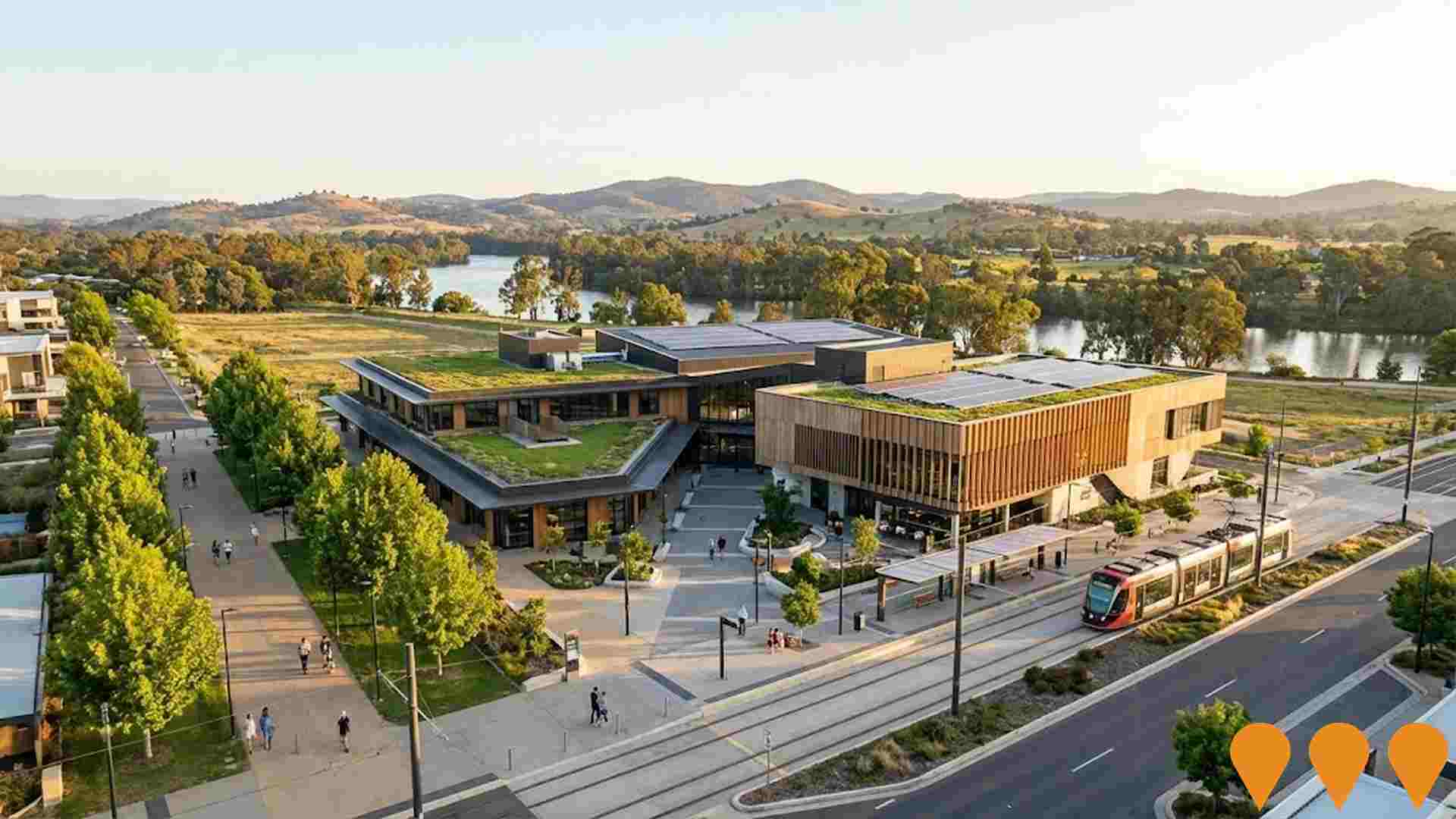
Botanic Gardens - Elm Ave Redevelopment
Council-led renewal of the historic Elm Avenue within Albury Botanic Gardens, replacing aging elms with climate-resilient ginkgo trees and creating a double perennial border, path and lighting upgrades. Works are staged, with landscaping now underway and full completion targeted for late 2026.

Oddies Creek Splash Park
A $5 million regional splash park at Oddies Creek Park featuring six riverine-themed water play zones, plant room, water treatment system, fencing, paths and landscaping. The region's first free dedicated water play facility, providing a safe, inclusive alternative to river swimming. Incorporates local First Nations culture and extends the existing playspace. Jointly funded by Australian Government ($2.5M) and Albury City Council ($2.5M). Construction planned to commence in 2026 with expected completion in 2027.
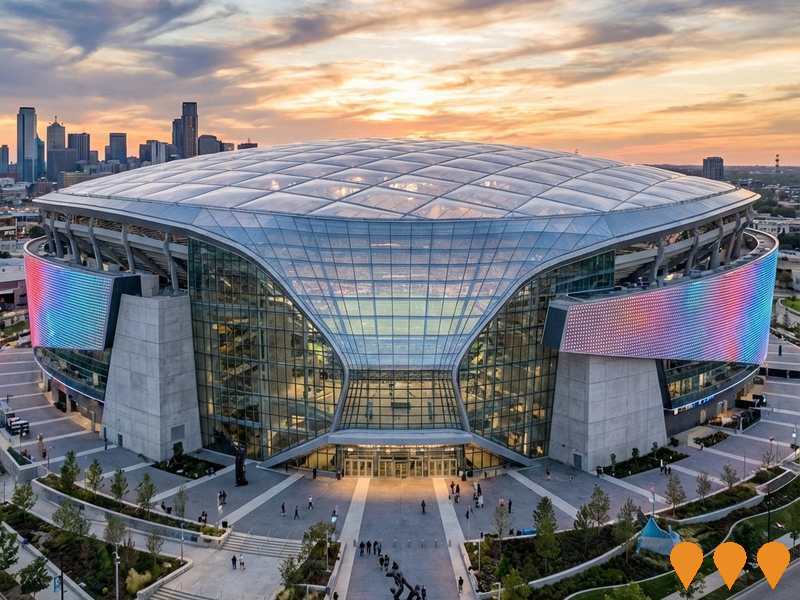
Punthill Albury Apartment Hotel
Development of an 83-key apartment-style hotel on Dean Street in central Albury, developed by Commercial Club Albury and operated by Veriu Group under the Punthill brand. It will feature studio, one, two, and three-bedroom apartments with fully equipped kitchens and laundry facilities, as well as two conference rooms, a gym, and secure on-site parking. The hotel aims to meet the demand for high-quality, flexible accommodation for both corporate and leisure travellers in the regional hub. Construction commenced in October 2025.
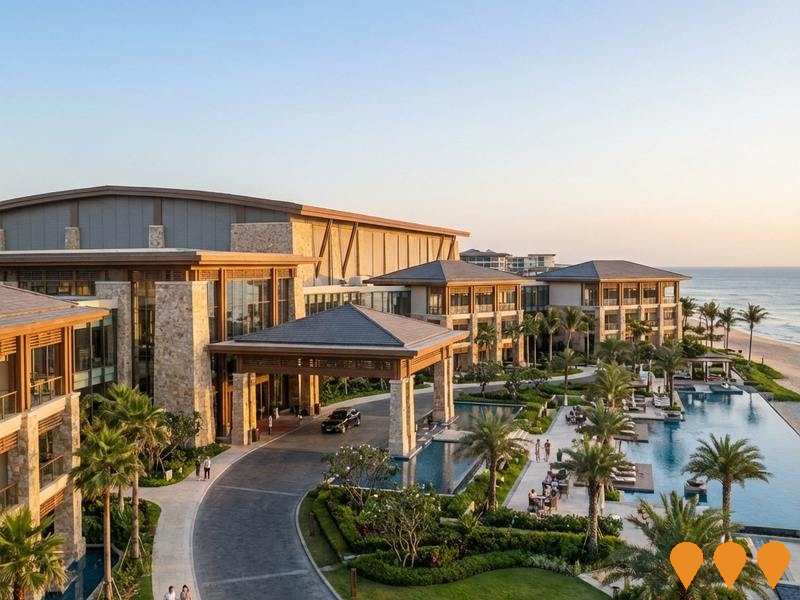
Seven Storey Mixed Use, Shop Top Housing Development
A seven-storey mixed-use building in central Albury, approved by the Southern Regional Planning Panel. It will feature commercial/retail space on the ground floor and 32 residential units (shop top housing) on the upper floors. The approval follows amendments to address concerns regarding acoustic amenity, contamination, and heritage conservation.

Main Sewer Pump Station Upgrade
Complex infrastructure project to upgrade pumping capacity at Main Sewer Pump Station while maintaining continuous service to growing city. Critical for supporting population growth and development in Albury.
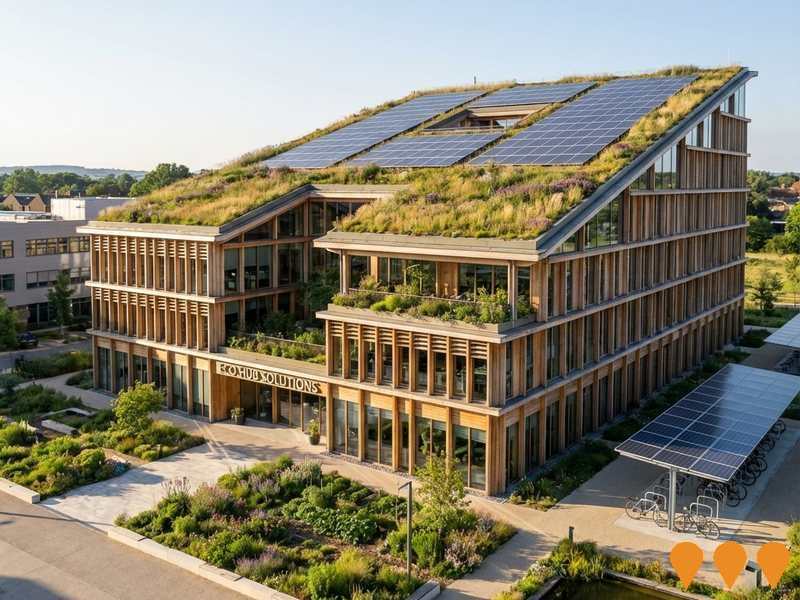
QEII Square Redevelopment
Cultural Precinct masterplan redevelopment designed by TCL landscape architecture. Part of broader cultural precinct enhancement around Albury Entertainment Centre with improved public spaces and connectivity.
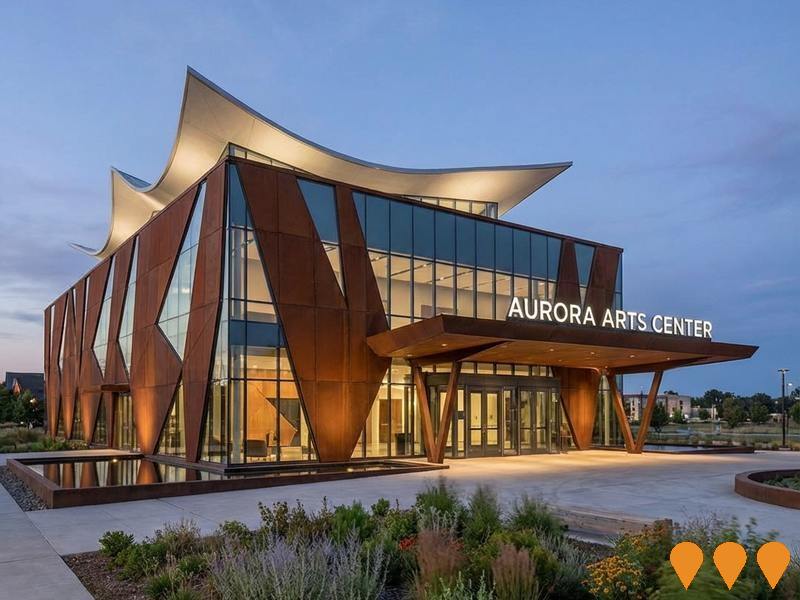
East Albury Precinct Plan
Comprehensive precinct plan to guide 20+ year growth and development along Borella Road and near Albury Hospital Campus. Will enable coordinated delivery of hospital expansion, road upgrades, and new social housing with improved housing density and retail opportunities.
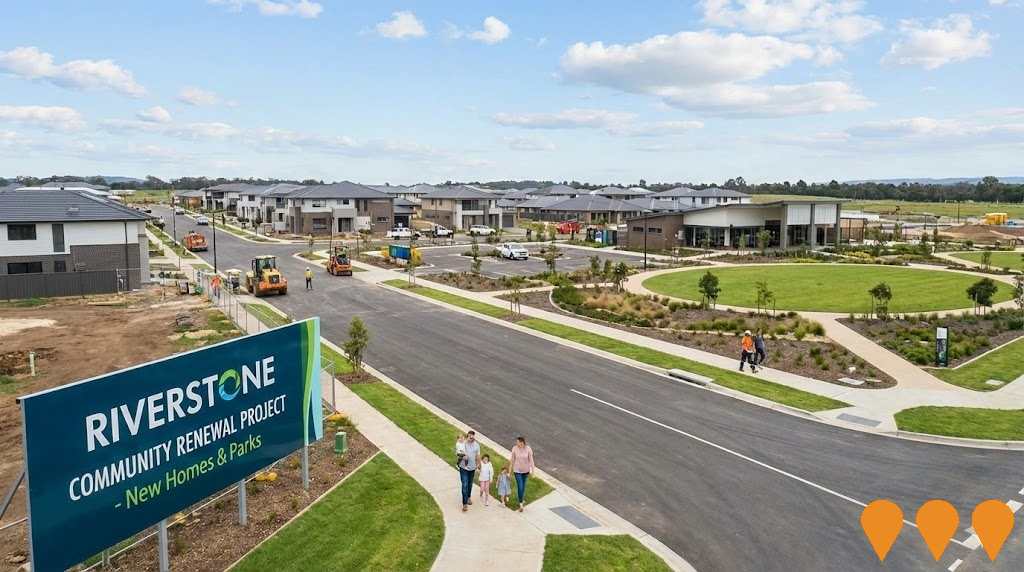
Employment
Employment performance in Albury - South has been below expectations when compared to most other areas nationally
Albury-South has a well-educated workforce with 5.7% unemployment rate as of June 2025. It experienced 3.7% employment growth over the past year.
The area's unemployment rate is 2.1% higher than Rest of NSW's rate of 3.7%, with workforce participation at 59.2%. Key industries for residents include health care & social assistance, education & training, and construction, while agriculture, forestry & fishing employs only 1.6% of local workers compared to Rest of NSW's 5.3%. The area hosts more jobs than residents, with a worker-to-resident ratio of 1.3.
Over the year ending June 2025, employment increased by 3.7%, labour force grew by 4.4%, and unemployment rose by 0.6 percentage points. In contrast, Rest of NSW saw employment decline by 0.1%, labour force growth of 0.3%, and unemployment rising by 0.4 percentage points. National employment forecasts from Jobs and Skills Australia (May 2025) project national employment growth of 6.6% over five years and 13.7% over ten years, with local growth in Albury-South estimated at approximately 6.7%% over five years and 14.0% over ten years based on industry-specific projections.
Frequently Asked Questions - Employment
Income
Income levels align closely with national averages, indicating typical economic conditions for Australian communities according to AreaSearch analysis
AreaSearch's latest postcode level ATO data for financial year 2022 shows that Albury - South had an income median of $53,064 and an average income of $67,130. This contrasts with Rest of NSW's median income of $49,459 and average income of $62,998. Based on Wage Price Index growth of 12.61% since financial year 2022, estimated current incomes are approximately $59,755 (median) and $75,595 (average) as of September 2025. Census 2021 income data ranks personal income at the 60th percentile ($857 weekly), with household income at the 32nd percentile. The largest income segment comprises 29.0% earning $1,500 - 2,999 weekly (2,998 residents). Housing costs are manageable with 87.3% retained, but disposable income is below average at the 36th percentile. Albury - South's SEIFA income ranking places it in the 5th decile.
Frequently Asked Questions - Income
Housing
Albury - South displays a diverse mix of dwelling types, with above-average rates of outright home ownership
Albury - South's dwelling structures, as per the latest Census, consisted of 67.6% houses and 32.4% other dwellings (semi-detached, apartments, 'other' dwellings). In comparison, Non-Metro NSW had 83.2% houses and 16.8% other dwellings. Home ownership in Albury - South stood at 36.6%, with mortgaged dwellings at 24.2% and rented ones at 39.2%. The median monthly mortgage repayment was $1,517, higher than Non-Metro NSW's average of $1,430. The median weekly rent in Albury - South was $250, compared to Non-Metro NSW's $265. Nationally, Albury - South's mortgage repayments were significantly lower than the Australian average of $1,863, and rents were substantially below the national figure of $375.
Frequently Asked Questions - Housing
Household Composition
Albury - South features high concentrations of lone person households, with a lower-than-average median household size
Family households comprise 57.8% of all households, including 19.7% couples with children, 27.3% couples without children, and 9.9% single parent families. Non-family households make up the remaining 42.2%, with lone person households at 38.5% and group households comprising 3.7%. The median household size is 2.1 people, which is smaller than the Rest of NSW average of 2.4.
Frequently Asked Questions - Households
Local Schools & Education
Albury - South performs slightly above the national average for education, showing competitive qualification levels and steady academic outcomes
Educational attainment in Albury - South is notably high with 31.4% of residents aged 15 and above holding university qualifications, compared to 18.4% in the SA4 region and 21.3% in the Rest of NSW. Bachelor degrees are most prevalent at 20.6%, followed by postgraduate qualifications (6.9%) and graduate diplomas (3.9%). Vocational credentials are also common, with 34.0% of residents holding such qualifications - advanced diplomas at 11.2% and certificates at 22.8%. Educational participation is high, with 26.6% of residents currently enrolled in formal education.
This includes 8.7% in primary education, 7.1% in secondary education, and 4.1% pursuing tertiary education. There are eight schools operating within Albury - South, educating approximately 3,536 students. The area has balanced educational opportunities (ICSEA: 1012) with four primary, two secondary, and two K-12 schools. It functions as an education hub with 34.2 school places per 100 residents, significantly above the regional average of 17.1.
Frequently Asked Questions - Education
Schools Detail
Nearby Services & Amenities
Transport
Transport servicing is high compared to other areas nationally based on assessment of service frequency, route connectivity and accessibility
Albury-South has 251 active public transport stops offering a mix of train and bus services. These stops are served by 129 routes, facilitating 3,493 weekly passenger trips in total. Residents enjoy excellent accessibility to transport, with an average distance of 133 meters to the nearest stop.
On average, there are 499 trips daily across all routes, resulting in approximately 13 weekly trips per individual stop.
Frequently Asked Questions - Transport
Transport Stops Detail
Health
Health performance in Albury - South is well below average with prevalence of common health conditions notable across both younger and older age cohorts
Albury-South faces significant health challenges, with common conditions prevalent across both younger and older age groups. Approximately 53% (~5,520 people) have private health cover, compared to 50.9% in Rest of NSW.
Mental health issues and arthritis are the most common conditions, affecting 10.0% and 9.3% of residents respectively. 63.3% reported no medical ailments, compared to 64.2% in Rest of NSW. The area has a higher proportion of residents aged 65 and over (24.1%, or 2,488 people), compared to the state average of 20.1%.
Frequently Asked Questions - Health
Cultural Diversity
Albury - South ranks below the Australian average when compared to other local markets across a number of language and cultural background related metrics
Albury-South has a cultural diversity below average, with 87.9% citizens, 86.0% born in Australia, and 91.6% speaking English only at home. Christianity is the main religion, comprising 52.6%. The population shows an overrepresentation of Other religions at 1.5%, compared to 1.4% regionally.
Top ancestry groups are English (30.2%), Australian (25.8%), and Irish (11.3%). Notable divergences include Scottish at 9.4% (vs regional 8.2%), German at 5.4% (vs 5.9%), and Hungarian at 0.3% (vs 0.2%).
Frequently Asked Questions - Diversity
Age
Albury - South hosts an older demographic, ranking in the top quartile nationwide
Albury - South's median age is 44 years, comparable to Rest of NSW's 43 years and higher than Australia's national average of 38 years. Compared to Rest of NSW, Albury - South has a larger proportion of residents aged 25-34 (13.7%) but fewer residents aged 5-14 (9.6%). Between the 2021 Census and now, the proportion of residents aged 25-34 has increased from 12.1% to 13.7%. Meanwhile, the proportions of those aged 55-64 have decreased from 14.0% to 12.7%, and those aged 45-54 have dropped from 12.2% to 11.0%. By 2041, Albury - South's age composition is expected to change significantly. The 25-34 age group is projected to grow by 28% (395 people), reaching a total of 1,815 from the current figure of 1,419. Conversely, the 5-14 and 15-24 age groups are expected to experience population declines.